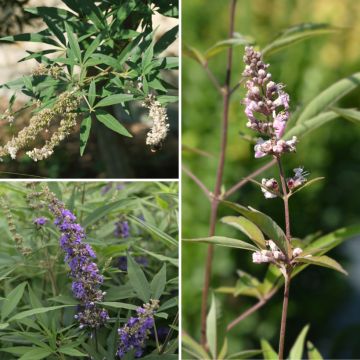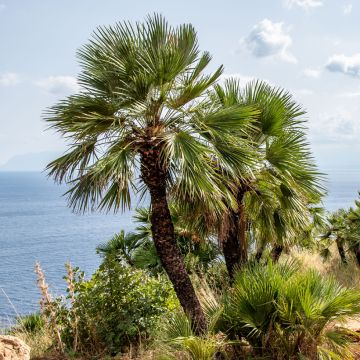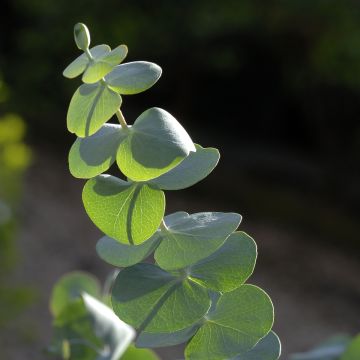

Pavonia Flamboyant® - Rock Rose
Pavonia Flamboyant® - Rock Rose
Pavonia x 'dupa1' Flamboyant®
Rock Rose
Special offer!
Receive a €20 voucher for any order over €90 (excluding delivery costs, credit notes, and plastic-free options)!
1- Add your favorite plants to your cart.
2- Once you have reached €90, confirm your order (you can even choose the delivery date!).
3- As soon as your order is shipped, you will receive an email containing your voucher code, valid for 3 months (90 days).
Your voucher is unique and can only be used once, for any order with a minimum value of €20, excluding delivery costs.
Can be combined with other current offers, non-divisible and non-refundable.
Why not try an alternative variety in stock?
View all →This plant carries a 24 months recovery warranty
More information
We guarantee the quality of our plants for a full growing cycle, and will replace at our expense any plant that fails to recover under normal climatic and planting conditions.
Would this plant suit my garden?
Set up your Plantfit profile →
Description
The Pavonia 'Flamboyant' is a small hybrid bush with an exotic appearance renowned for its generous, continuous flowering from May to September. Its flamboyant flowers, similar to those of hibiscus, display a red colour sometimes washed with orange. They are less wide than hibiscus flowers, but produced profusely, even in dry and hot climates. Its only flaw is a lack of hardiness (-5°C). Growing it in a pot allows you to enjoy its charm on a balcony or terrace and protect it from frost in winter like a citrus plant.
The Pavonia 'Flamboyant' belongs to the Malvaceae family. It is a hybrid whose parentage is not specified. It originates from shrub species native to South America, mainly Brazil and Argentina. The Pavonia 'Flamboyant' has shiny green foliage that more or less persists in mild climates during winter. The leaves have a slightly puckered appearance, with a dentate edge. They are of a medium green colour, slightly fuzzy, and enhance the flower colour. This bush offers continuous flowering throughout the growing season. The flowers, measuring about 5 cm in diameter, consist of 5 vermilion red petals, sometimes tinged with orange, surrounding a prominent yellow pistil. Each flower only lives for a few hours, but they continuously renew between May and September. This fast-growing small bush generally reaches a height of 1m to 1.2m and a spread of 50 to 60 cm. It prefers a sunny exposure and tolerates brief frosts around -5°C. Its heat requirements are higher during the flowering period. The growth of this bush is moderate but regular, and it only requires minimal maintenance once well established in the ground.
The Pavonia 'Flamboyant' is a beautiful plant for Mediterranean gardens or patio decoration in a container. This variety can be paired with Lantana 'Shamrock Red' with its vibrant flowering and Plumbago 'Dark Blue' blooming in a lovely blue all summer. The Hibiscus syriacus 'Red Heart', with its white flowers and red centre, will also make a good companion.
Report an error about the product description
Pavonia Flamboyant® - Rock Rose in pictures


Plant habit
Flowering
Foliage
Botanical data
Pavonia
x
'dupa1' Flamboyant®
Malvaceae
Rock Rose
Cultivar or hybrid
Other Shrubs A to Z
View all →Planting and care
Plant Pavonia 'Flamboyant' in a sunny position in well-drained, fertile, humus-bearing soil, even slightly chalky. Dig a deep planting hole, add some compost and sand to your garden soil to improve soil quality if necessary. Water generously after planting. This species tolerates heat and drought well, but if lacking in nutrients, light, and/or water, flowering will be less abundant. In hot regions, water occasionally to support flowering.
Growing Pavonia 'Flamboyant' in a pot is ideal for climates where winter temperatures drop below -5°C, as it allows you to move the plant indoors during the cold season. Use a suitable-sized pot (40 cm in diameter), with drainage holes at the bottom, and place a layer of gravel or clay beads at the base. Use a rich, well-draining potting mix. A mix for flowering plants, enriched with organic matter, will suit it.
Do a light pruning at the end of winter or very early in spring, before the start of new growth. This encourages a new abundant flowering and maintains a compact and harmonious habit. Pruning involves removing dead or damaged branches, as well as cutting back stems to promote denser branching. A more severe pruning can be done every two to three years to rejuvenate the plant.
Removing faded flowers as they wither will extend the flowering period.
Planting period
Intended location
Care
Planting & care advice
This item has not been reviewed yet - be the first to leave a review about it.
Similar products
Haven't found what you were looking for?
Hardiness is the lowest winter temperature a plant can endure without suffering serious damage or even dying. However, hardiness is affected by location (a sheltered area, such as a patio), protection (winter cover) and soil type (hardiness is improved by well-drained soil).

Photo Sharing Terms & Conditions
In order to encourage gardeners to interact and share their experiences, Promesse de fleurs offers various media enabling content to be uploaded onto its Site - in particular via the ‘Photo sharing’ module.
The User agrees to refrain from:
- Posting any content that is illegal, prejudicial, insulting, racist, inciteful to hatred, revisionist, contrary to public decency, that infringes on privacy or on the privacy rights of third parties, in particular the publicity rights of persons and goods, intellectual property rights, or the right to privacy.
- Submitting content on behalf of a third party;
- Impersonate the identity of a third party and/or publish any personal information about a third party;
In general, the User undertakes to refrain from any unethical behaviour.
All Content (in particular text, comments, files, images, photos, videos, creative works, etc.), which may be subject to property or intellectual property rights, image or other private rights, shall remain the property of the User, subject to the limited rights granted by the terms of the licence granted by Promesse de fleurs as stated below. Users are at liberty to publish or not to publish such Content on the Site, notably via the ‘Photo Sharing’ facility, and accept that this Content shall be made public and freely accessible, notably on the Internet.
Users further acknowledge, undertake to have ,and guarantee that they hold all necessary rights and permissions to publish such material on the Site, in particular with regard to the legislation in force pertaining to any privacy, property, intellectual property, image, or contractual rights, or rights of any other nature. By publishing such Content on the Site, Users acknowledge accepting full liability as publishers of the Content within the meaning of the law, and grant Promesse de fleurs, free of charge, an inclusive, worldwide licence for the said Content for the entire duration of its publication, including all reproduction, representation, up/downloading, displaying, performing, transmission, and storage rights.
Users also grant permission for their name to be linked to the Content and accept that this link may not always be made available.
By engaging in posting material, Users consent to their Content becoming automatically accessible on the Internet, in particular on other sites and/or blogs and/or web pages of the Promesse de fleurs site, including in particular social pages and the Promesse de fleurs catalogue.
Users may secure the removal of entrusted content free of charge by issuing a simple request via our contact form.
The flowering period indicated on our website applies to countries and regions located in USDA zone 8 (France, the United Kingdom, Ireland, the Netherlands, etc.)
It will vary according to where you live:
- In zones 9 to 10 (Italy, Spain, Greece, etc.), flowering will occur about 2 to 4 weeks earlier.
- In zones 6 to 7 (Germany, Poland, Slovenia, and lower mountainous regions), flowering will be delayed by 2 to 3 weeks.
- In zone 5 (Central Europe, Scandinavia), blooming will be delayed by 3 to 5 weeks.
In temperate climates, pruning of spring-flowering shrubs (forsythia, spireas, etc.) should be done just after flowering.
Pruning of summer-flowering shrubs (Indian Lilac, Perovskia, etc.) can be done in winter or spring.
In cold regions as well as with frost-sensitive plants, avoid pruning too early when severe frosts may still occur.
The planting period indicated on our website applies to countries and regions located in USDA zone 8 (France, United Kingdom, Ireland, Netherlands).
It will vary according to where you live:
- In Mediterranean zones (Marseille, Madrid, Milan, etc.), autumn and winter are the best planting periods.
- In continental zones (Strasbourg, Munich, Vienna, etc.), delay planting by 2 to 3 weeks in spring and bring it forward by 2 to 4 weeks in autumn.
- In mountainous regions (the Alps, Pyrenees, Carpathians, etc.), it is best to plant in late spring (May-June) or late summer (August-September).
The harvesting period indicated on our website applies to countries and regions in USDA zone 8 (France, England, Ireland, the Netherlands).
In colder areas (Scandinavia, Poland, Austria...) fruit and vegetable harvests are likely to be delayed by 3-4 weeks.
In warmer areas (Italy, Spain, Greece, etc.), harvesting will probably take place earlier, depending on weather conditions.
The sowing periods indicated on our website apply to countries and regions within USDA Zone 8 (France, UK, Ireland, Netherlands).
In colder areas (Scandinavia, Poland, Austria...), delay any outdoor sowing by 3-4 weeks, or sow under glass.
In warmer climes (Italy, Spain, Greece, etc.), bring outdoor sowing forward by a few weeks.




































































